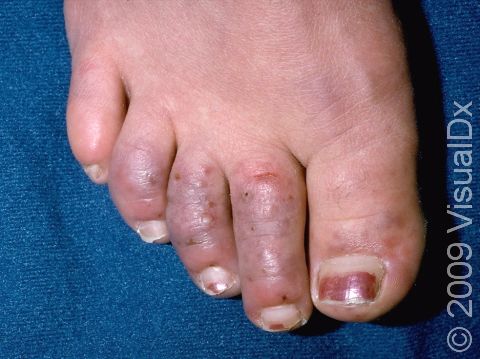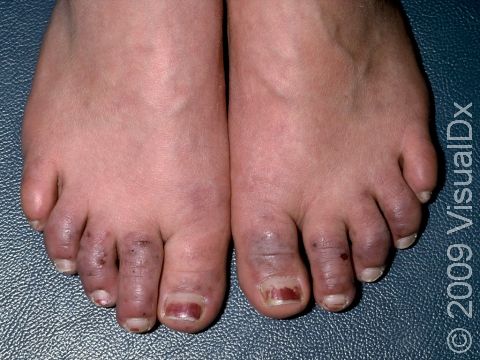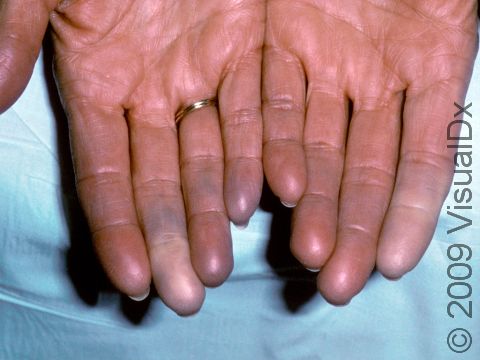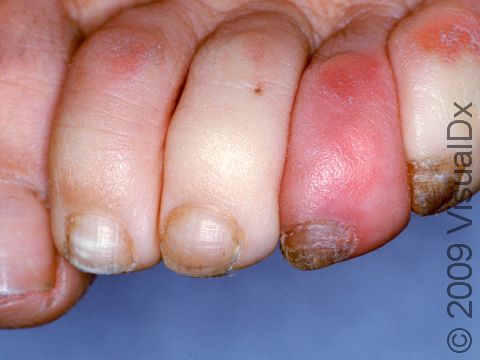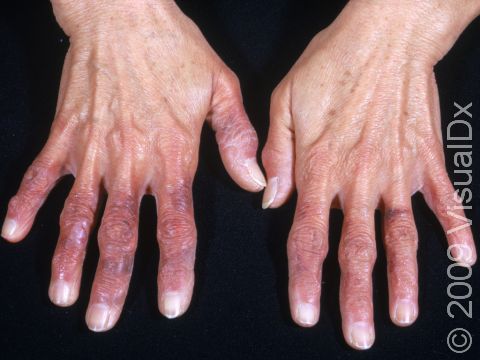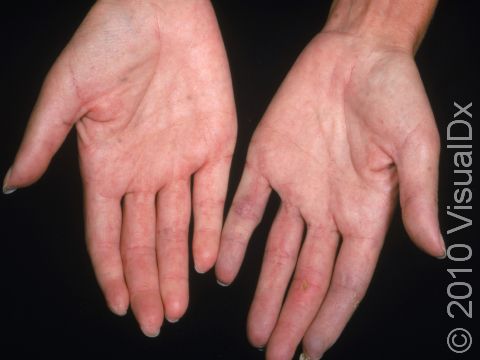Raynaud's Phenomenon
Raynaud’s phenomenon is a disorder in which the blood vessels to the fingers and toes (digits) become abnormally closed off (constricted). The fingers and toes of individuals with Raynaud’s phenomenon change color from white to blue to red, often causing them to feel numb. Raynaud’s phenomenon is sometimes seen with autoimmune diseases, such as rheumatoid arthritis, scleroderma, and lupus, where the body’s immune system turns against itself, causing various symptoms. Other causes of Raynaud’s phenomenon include repeated trauma/vibration, abnormalities in the structure of blood vessels, and drug injection into one type of blood vessel (arteries).
Who's At Risk?
Raynaud’s phenomenon usually affects younger to middle-aged women. When it affects men, it is usually seen in middle age or later in life. Raynaud’s phenomenon is seen in 20% of people with lupus.
Signs & Symptoms
- Raynaud’s phenomenon affects the fingers and toes (digits). The digits feel cool and their color changes from white to blue to red.
- Severe Raynaud’s phenomenon can result in skin ulcers. This complication is more common in people who have both scleroderma and Raynaud’s phenomenon.
- People with Raynaud’s phenomenon may have more noticeable small blood vessels (capillaries) into their fingers and toes where the nail plate meets the skin of the finger (proximal nail fold), particularly in people who also have an autoimmune disease.
Self-Care Guidelines
Avoid exposure to cold as much as possible, and do not smoke, as this contributes to blood vessel narrowing.
Treatments
- Oral medications, including nifedipine (a blood pressure medication), epoprostenol (a prostaglandin), or a drug that affects the nerves (selective serotonin reuptake inhibitor), such as fluoxetine.
- Topical nitroglycerin paste, which helps to dilate blood vessels, may be used as needed to treat or prevent active Raynaud’s phenomenon. Apply the paste carefully as it can lead to low blood pressure (hypotension) if used on large areas.
- Biofeedback, which is a treatment technique in which people are trained to improve their health by using signals from their own bodies, is another therapy for Raynaud’s phenomenon.
Visit Urgency
See your doctor if you notice symptoms suspicious for Raynaud’s phenomenon. Further testing may be needed to see if you might have another medical condition that is causing your symptoms.
Trusted Links
References
gnia, Jean L., ed. Dermatology, pp.262, 626. New York: Mosby, 2003.
Freedberg, Irwin M., ed. Fitzpatrick’s Dermatology in General Medicine. 6th ed. pp.1031, 1326, 1637. New York: McGraw-Hill, 2003.
Last modified on August 16th, 2021 at 7:45 pm

Not sure what to look for?
Try our new Rash and Skin Condition Finder
